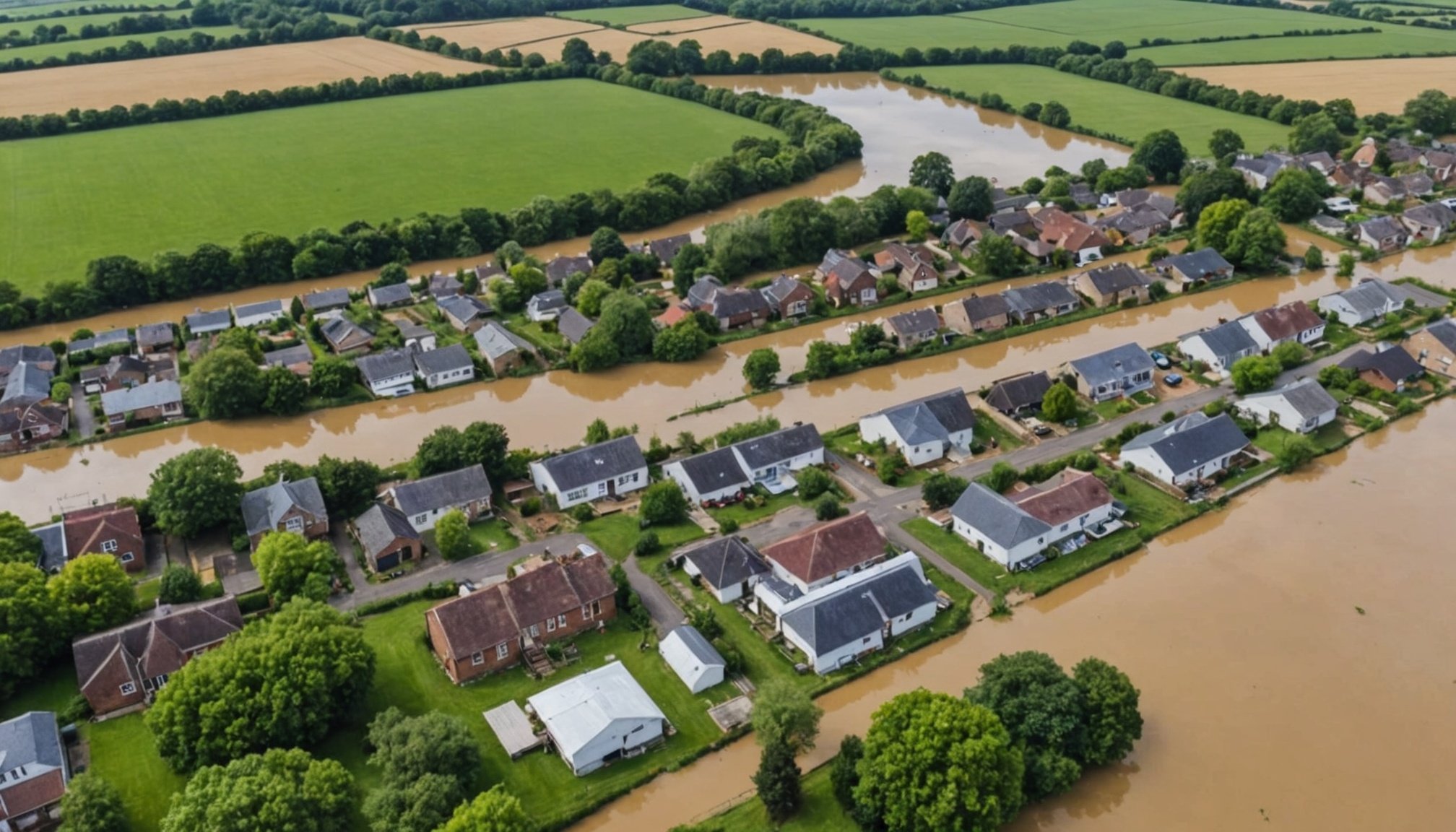Understanding Flood Plain Reclassifications
Flood plain reclassifications are essential in determining areas susceptible to flooding, guiding development and insurance protocols. These reclassifications are changes or updates in the categorisation of land based on its flood risk. FEMA designations play a pivotal role; FEMA, or the Federal Emergency Management Agency, uses scientific data to map different flood zones, which indicate varied levels of flood risk.
Flood zones are mapped into categories such as moderate-to-low risk areas (Zones B, C, and X) and high-risk areas (Zones A, AE, AH, AO, and AR) among others. These categories influence everything from building regulations to insurance requirements, aiming to mitigate flood-related damage.
In parallel : Exploring the Impact of the Electric Vehicle Surge on London Homes with Parking Amenities
FEMA designations are dynamic and can change in response to new data or environmental changes. This is particularly evident in places like Somerset, where flood plain management is continuously evolving. Recent trends in this region focus on incorporating updated climate models and technological advancements in mapping techniques. By doing so, Somerset aims to enhance its preparedness against potential flooding events, promoting sustainable development within high-risk areas.
Understanding these classifications is crucial for property owners, local governments, and developers, as it affects land usage, insurance premiums, and development plans.
Additional reading : Transforming a Listed Building into a Charming Home in Oxford: A Step-by-Step Guide
Recent Changes in Somerset’s Flood Zones
Understanding the latest Somerset flood maps is crucial for residents who live in or around potential flood zones. The updated maps reflect recent geographical and climatic changes, significantly altering the landscape of flood zone updates in the region. These changes influence not only safety precautions but also local property markets.
Local Regulations and Property Impact
With the flood zone updates, stringent local regulations have been implemented to safeguard residents. These regulations affect property valuations, as homes in high-risk areas might face depreciation. Potential buyers must now consider flood insurance more seriously, an added expense impacting the appeal of certain properties.
Community Reactions
The updates and regulations have sparked varied community reactions. Some residents welcome the clarity and enhanced safety measures, appreciating the proactive stance on potential disasters. However, others express concerns over decreased property values and increased insurance costs. Feedback suggests a desire for more transparency from local authorities to mitigate these financial ramifications.
Informed decisions stem from acknowledging the flood maps‘ significance and adapting to the evolving local regulations. Somerset residents are encouraged to review these changes carefully, ensuring both safety and financial stability amidst these flood zone alterations.
Impact on Property Insurance Rates
A critical factor affecting property insurance premiums is flood plain reclassification. This reclassification often results in the adjustment of flood insurance calculations. Properties newly classified within high-risk flood zones may experience increased premiums due to heightened perceived risk. Homeowners may discover their current insurance costs rise sharply compared to previous rates, reflecting the shift in hazard assessment.
In Somerset, analysis reveals a significant trend when comparing current rates to historical data. Recently reclassified areas show notable variations in premium increases, underscoring the impact of changing risk perceptions. For instance, homes situated in areas now considered more vulnerable to flooding often face steeper insurance costs, contrasting with historically stable pricing.
Insurance market trends give insight into the broader pricing strategy. Professionals anticipate that as climate change continues to affect flood risks, insurers will further adjust premiums accordingly. They predict a heightened need for comprehensive flood insurance solutions to maintain financial viability amidst increasing flood occurrences.
Understanding these dynamics can empower property owners to make informed decisions about insurance coverage. By monitoring potential reclassifications and consulting with experts, homeowners can better navigate the evolving property insurance premiums landscape and protect their investments against unforeseen expenses.
Practical Advice for Homeowners and Buyers
Navigating changes in insurance strategies can be daunting for any homeowner. To begin with, it is crucial to regularly review your policy. This ensures you’re covered for recent flood risk assessments. Insurance companies are continually updating their criteria, so staying informed about potential policy changes is vital.
Flood risk management should be a top priority. Consider the following property owner tips to mitigate flood-related costs:
- Elevate critical systems, such as heating and electrical panels, above ground level to reduce flood damage.
- Install sump pumps and check valves to prevent groundwater from leaking into your basement.
- Harvest rainwater through a rain barrel system to manage water flow and reduce potential flooding around your home.
For prospective buyers, understanding a property’s flood risk profile is key. Use tools like Flood Map Services to evaluate flood-prone areas before purchasing. These resources offer valuable insights into historical flood data and future risks, empowering you to make informed decisions.
It’s advisable to consult local authorities or environmental consultants for tailored recommendations. Taking these proactive steps not only ensures safety but can also positively impact property values over time. By implementing these strategies, homeowners and buyers can confidently navigate the landscape of flood risk and insurance challenges.
Expert Opinions and Case Studies
For a deeper understanding of the recent changes in property reclassification, industry insights provide valuable context. Interviews with local insurance agents highlight expert analysis of these changes, revealing significant impacts. Agents have noted an increase in premiums for properties newly classified within flood zones. This reflects a broader trend identified by industry experts, who agree that reclassification can significantly affect insurance requirements and costs.
In terms of case studies, several properties have experienced notable reclassification impacts. A study of a suburban neighbourhood showed a clear pattern—properties now categorized as high-risk faced reduced market value and increased insurance premiums. The owner of a recently reclassified property reported a remarkable 30% rise in annual insurance costs, underlining the stark financial consequences.
Research into the long-term effects of flood plain designations reveals lasting implications for property owners. Properties within these designations often see depreciation in value, as buyers may hesitate due to the perceived risk. Such insights are crucial for potential buyers and current owners to consider. They underscore the importance of conducting thorough case studies and leveraging expert analysis to make informed decisions about property investments and insurance.











